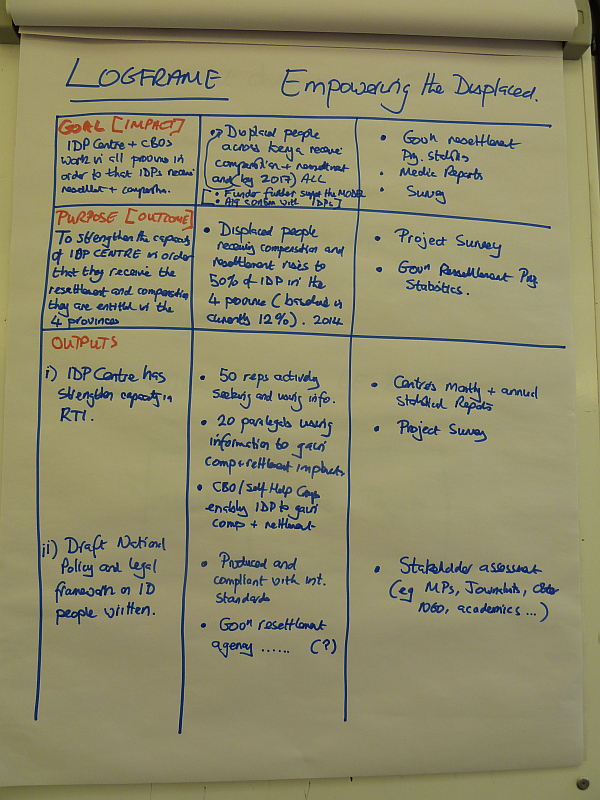After each training or workshop, I try to write up some key learning points for myself – how I’d run the course differently, what sessions worked well and which were less successful – and why. The difficulty is that each course varies so much depending on the participants, the questions they are bringing with them, and the context they are working in – so it is not always easy to tease out success factors. Was is something I did? Or was it that the approach/tool/idea was just what the participants were searching for at that time?
I know there are things that I’d like to be better at – endings and conclusions, for example. But it is one thing to know what needs changing and another to actually do it!
So when INTRAC recently asked me to work with Max Peberdy on a piece of work for Article 19, I was glad of the opportunity to work with someone who has so much experience. Here’s a few top tips I got from watching him in action:
1. Write out the whole day’s ‘script’ as flip charts the night before. Fantastic! Kept me focussed, examples ready prepared, pace was there, exercises built in to the presentations so there was no temptation to talk for too long. Sounds too time consuming? Yes it was (2-3 hours each day). Power point is better? No – you can add things to the flip chart, complete examples as you go along, answer questions by adding to diagrams. It’s much more interactive and doesn’t cut you off from the group. Overall, participants found it ‘worked’ for them – feedback on presentations was good.
 2. Use pertinent quotes in a different way – give half the quote and ask participants to complete it.
2. Use pertinent quotes in a different way – give half the quote and ask participants to complete it.
3. Don’t bombard people with questions as you present – if you’ve got something to say, get on with it. Then there’s plenty of time for discussion once the presentation is done, and genuine questions will come up as people feel the need.
4. Use imagery: Max used the picture of a simple house to talk about planning a p roject, and spoke of good foundations (thorough planning and a good theory of change), and the problem of over-ambitious projects (there’s a small and achievable house lurking inside this big impossible mansion). It might seem simplistic, but it was useful – an image that people referred to over and over again during the course.
roject, and spoke of good foundations (thorough planning and a good theory of change), and the problem of over-ambitious projects (there’s a small and achievable house lurking inside this big impossible mansion). It might seem simplistic, but it was useful – an image that people referred to over and over again during the course.
Here’s my own tip:
5. Get feedback as you go along in a way that’s engaging and will help you know where you are. 
Adding bits and pieces and trying out new things is not that hard. Changing presentation style is harder, but I’m going to keep having a go!


